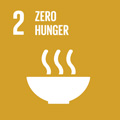- Docente: Kristina Landa
- Credits: 6
- SSD: L-LIN/21
- Language: Russian
- Teaching Mode: In-person learning (entirely or partially)
- Campus: Forli
-
Corso:
Second cycle degree programme (LM) in
Interpreting (cod. 8060)
Also valid for Second cycle degree programme (LM) in Interpreting (cod. 8060)
Learning outcomes
Students acquire basic interpretation techniques, such as sight translation, whispered interpretation, note-taking and simultaneous interpreting (basic level). Students practice and develop their interpreting skills from Italian into Russian.
Course contents
The course is run over two semesters. The main objective of the course is to provide students with the basic techniques related to conference interpreting, such as active and passive listening; speech/text analysis; information memorization; re-formulation.
During the course, students will receive theoretical and practical training in active interpreting.
During the first weeks, class activities will include sight translation, note-taking and whispered interpretation. Moreover, every student will be asked to prepare at home a short text on any subject and to draft a glossary for this text in order to deliver a consecutive interpretation of this text in the lesson. The text will be read aloud by the student who has prepared it.
In the second term students will be introduced to the world of simultaneous interpreting (with and without text) in the booth and will be required to develop and perfect the skills learnt before. Original speeches will be used, such as conference speeches, news, interviews, debates, on a multitude of topics, ranging from international relations to trade and economic relations, from cultural events to environment, from emigration to sport and mass media.
The focus of the course will then switch to the development of the skills required to analyse a speech in Italian and reproduce it in Russian, using the expressive means typical of the register of the speeches supplied in the lesson. Exercises will be given to ensure the use of simple but idiomatic forms of expression in Russian. Moreover, students will learn to assess the communicative situation by using comparative morphosyntactic, lexical, stylistic, pragmatic and cultural analysis of the two languages.
As general knowledge is important, due to the broad range of topics covered in meetings, students will need to ensure they keep abreast of current affairs and political, cultural and social situation in the country of SL and TL. Students will also be required to prepare specific glossaries.
The course consists of 2 modules:
Module 1 Lyubov Bezkrovna
Module 2 Kristina Landa
Readings/Bibliography
1. ALEKSEEVA I.S., Professional'nyj trening perevodčika, Sojuz, Sankt-Peterburg, 2004.
2. ČUZAKIN А.P., PALAŠČENKO P.R., Mir perevoda, ili Večnyj poisk vzaimoponimanija, Valent, Moskva, 1999.
3. FALBO C., RUSSO M., STRANIERO SERGIO F., Interpretazione simultanea e consecutiva. Problemi teorici e metodologie didattiche, Hoepli, Milano, 2008.
4. MIN'JAR-BELORUČEV R.K., Obščaja teorija perevoda i ustnyj perevod, Voenizdat, Мoskva, 1980.
5. MIN'JAR-BELORUČEV R.K., Zapisi v posledovatel'nom perevode, Stella, Moskva, 1997.
6. RICCARDI A., Dalla traduzione all'interpretazione. Studi di interpretazione simultanea, Edizioni Universitarie di Lettere Economia Diritto, Milano, 2003.
7. ŠČEKINA I.A., Ital'janskij jazyk. Ustnyj perevod, Vysšaja škola,Moskva, 1986.
8. STRANIERO, S. F., Interpretazione simultanea dal russo in italiano. Fondamenti teorici e applicazioni pratiche, Trieste, Edizioni Goliardiche, 1997.
Teaching methods
Preparatory exercises: memorization, analysis, synthesis, speech reformulation in Russian. Students will be asked to produce oral summaries and paraphrases of the texts read in class or of recorded speeches (audio and video), with and without note-taking. To expand their vocabulary, they will be encouraged to look for synonyms and antonyms and will be taught idiomatic expressions.
Students will have the opportunity to act as interpreters in situations close to the reality of consecutive and simultaneous interpreting, as real speeches will be used. Exercises will gradually become more challenging. Students will normally know in advance the topics that will be covered in class.
Students will be asked to prepare glossaries for upcoming exercises.
Students will also be provided with guidelines on how to practise at home.
Assessment methods
The final examination, which will be held at the end of the academic year, will assess the students’ ability to use the techniques of simultaneous and consecutive interpreting between Italian and Russian.
The exam will consist of:
- 5 minutes of consecutive interpreting from Italian into Russian;
- 10 minutes of simultaneous interpreting from Italian into Russian.
The topics of the exam will be current or social, political and economic affairs and any of the topics dealt with during the year.
The final grade will be the average of marks obtained by the student during the exam.
The topic of the exam will be communicated to the students one week in advance via Moodle.
Teaching tools
- Audio and video recordings
- Digital or printed documents
- Electronic dictionaries
Links to further information
https://moodle.sslmit.unibo.it/course/view.php?id=1114
Office hours
See the website of Kristina Landa
SDGs




This teaching activity contributes to the achievement of the Sustainable Development Goals of the UN 2030 Agenda.
